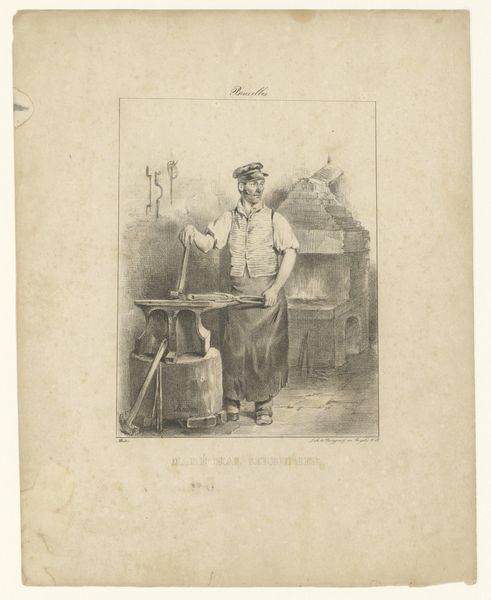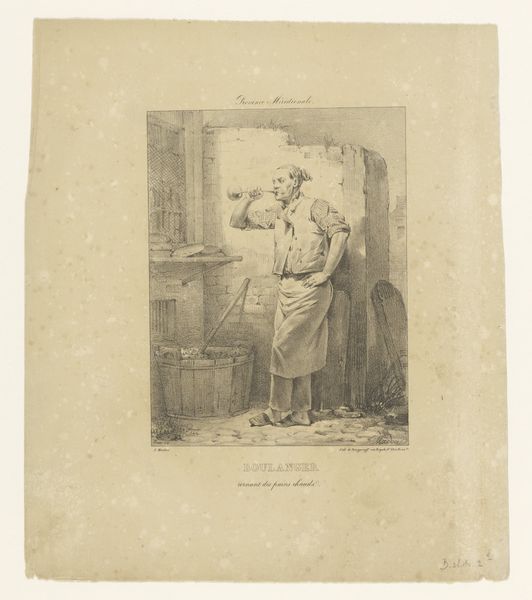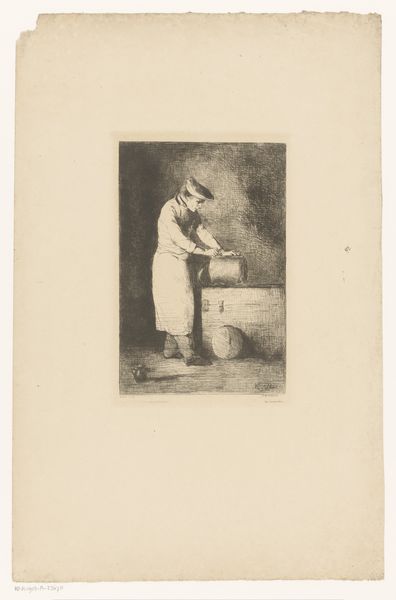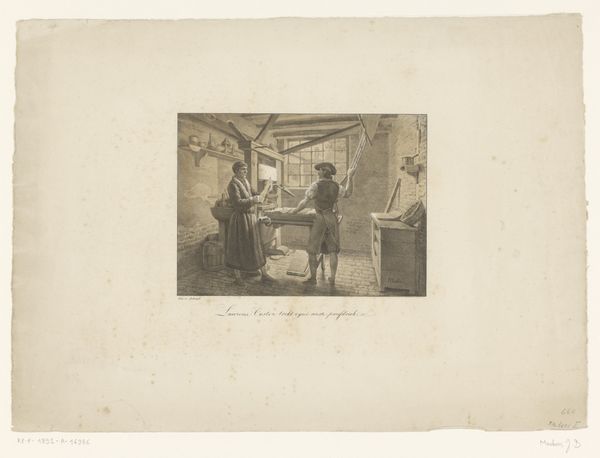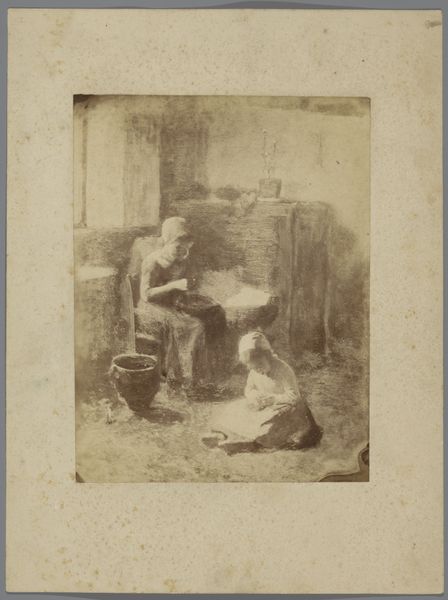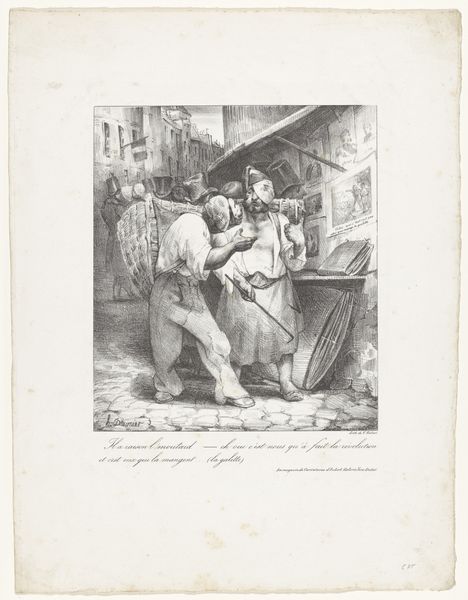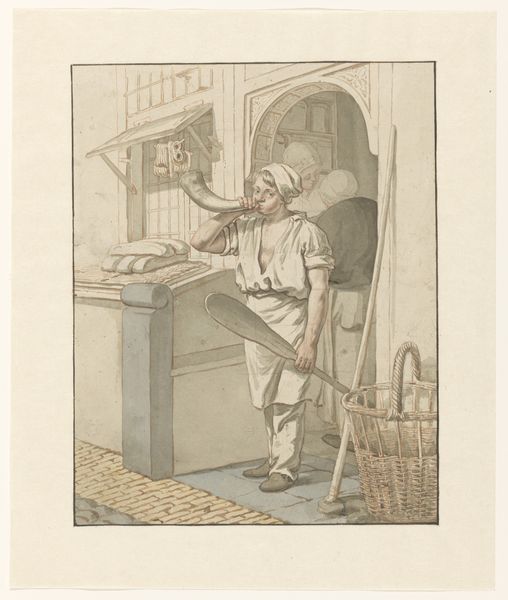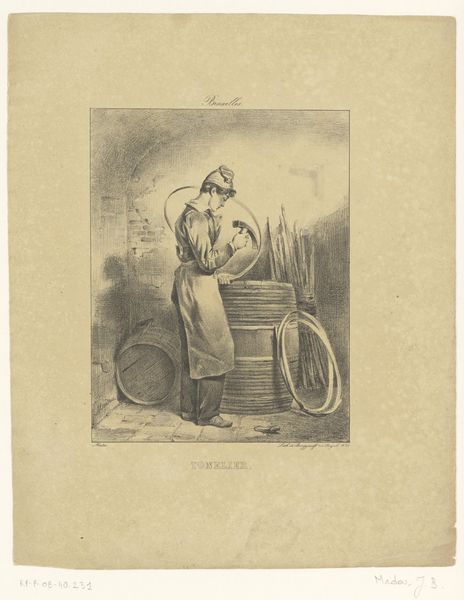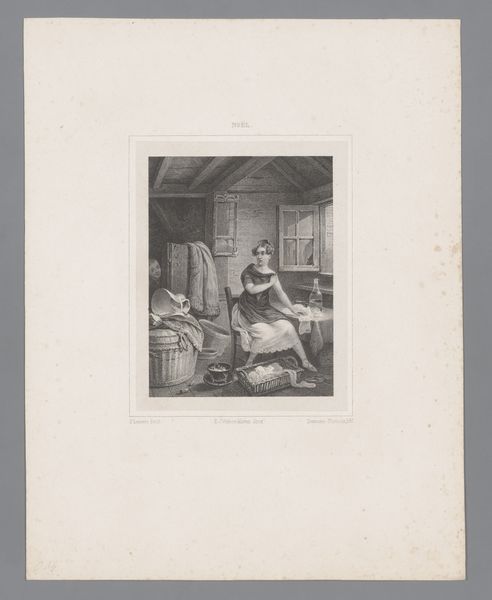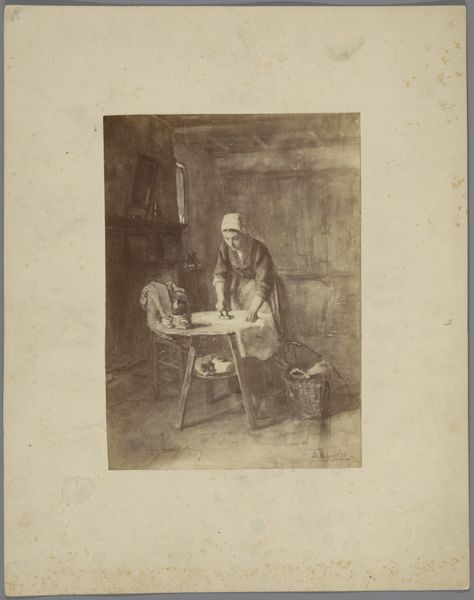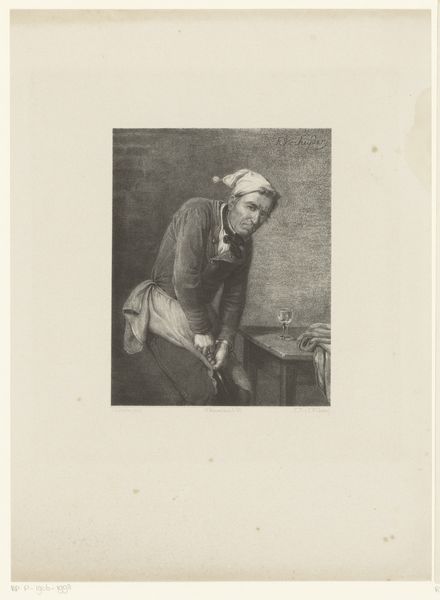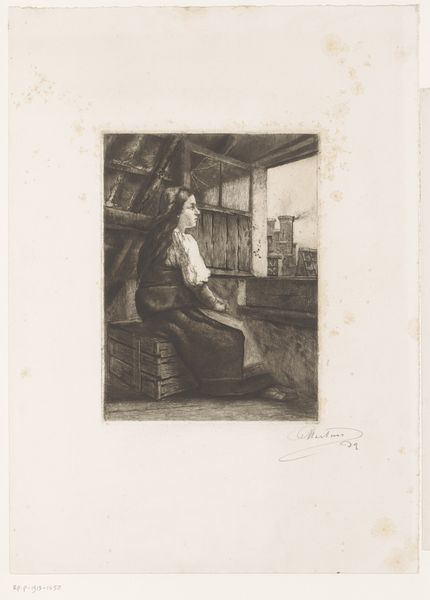
drawing, paper, pencil
#
drawing
#
figuration
#
paper
#
romanticism
#
pencil
#
genre-painting
#
realism
Dimensions: height 342 mm, width 275 mm
Copyright: Rijks Museum: Open Domain
Curator: Here we have "Timmerman aan het werk" created by Jean-Baptiste Madou sometime between 1825 and 1835. It’s a pencil drawing on paper, currently held here at the Rijksmuseum. Editor: It's surprisingly serene. Despite the subject being manual labor, there's a quiet focus to it. The limited color palette enhances that sense of stillness. Curator: I find it interesting how Madou portrays this artisan. The Romantic era was marked by significant social upheaval with the industrial revolution already underway. This representation can be understood as both a record and a romanticization of traditional crafts threatened by industrial advancements. There's a political undertone to these representations, subtly questioning societal values. Editor: Yes, the solitary figure immediately reminded me of images of hermits and ascetics from earlier times. There’s a purity associated with it; this notion of creating something from nothing, or in this case from raw material, that's potent imagery. The Carpenter archetype resonates across cultures. Think of Joseph building for his family. Curator: Exactly! And it is important to consider how the artist positions the worker as an individual contributing directly to society versus being an alienated factory worker in emerging urban environments. This romantic vision omits the harsh realities of pre-industrial labor while underscoring the significance of individuality and skill. Editor: Even small details, like the tree visible in the background through the window, adds to the emotional depth. It is indicative of nature as life-sustaining source, tying this ordinary scene to a fundamental life force and to freedom of life. Curator: Definitely. Considering the context of early 19th-century Europe, the artwork underscores a period where pre-industrial societal values were questioned amidst the shift towards a new era of industrialization and mass production. Editor: The interplay between social conditions, artistic depiction and deep seated archetype really makes this more than just an image of a carpenter at work. Curator: Indeed, viewing Madou’s piece is akin to stepping into a historical discourse regarding work and its position in the changing societal structures. It prompts one to reflect on how we interpret labor and the inherent symbolism within such seemingly simple activities.
Comments
No comments
Be the first to comment and join the conversation on the ultimate creative platform.
